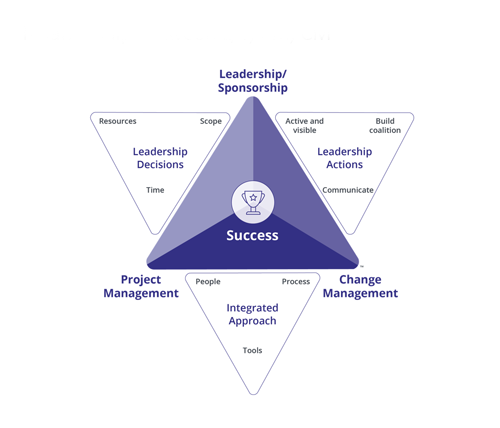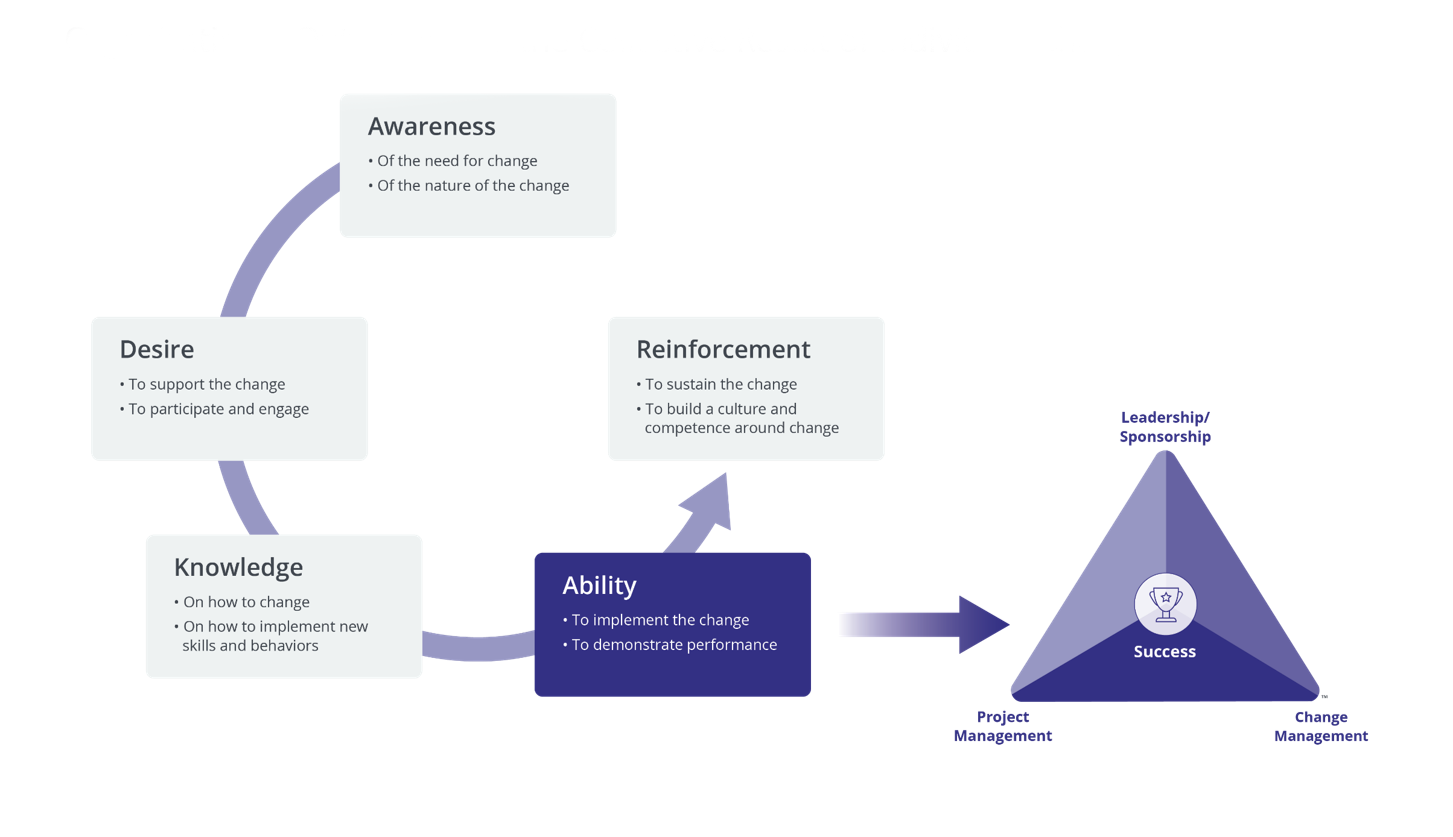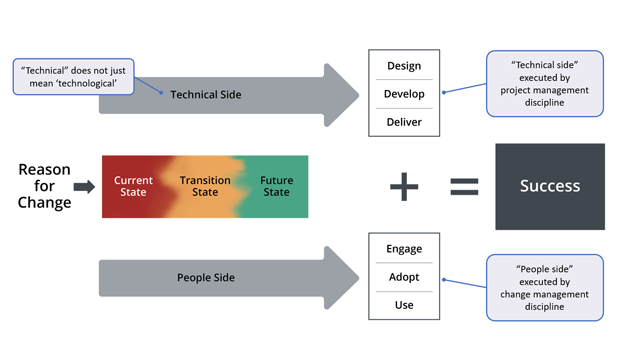The Prosci® Change Management Methodology is a structured approach to the change process. Prosci® — short for Professional + Science — uses 20 years of research with thousands of change leaders to arrive at an approach to change that focuses on the people side of change to achieve greater outcomes. Since it is established that organizational change depends upon individual change, the three phases of the methodology for organizational change support individuals through:
- Phase 1 – Preparing for Change
- Phase 2 – Managing Change
- Phase 3 – Reinforcing Change
Additionally, the methodology includes assessing readiness using the project change triangle (PCT) periodically throughout the life of the project. The PCT assessments have the project team answer a set of questions about the Leadership/Sponsorship, Project Management, and Change Management factors, to help us to gauge where the project may have gotten off kilter at different points during its life cycle. The intention is to balance the three factors, much like a three-legged stool. When any one factor slips, the stool becomes wobbly and needs to be strengthened to keep from falling over. The Change Management team uses the PCT assessment results to identify where efforts could be better focused to keep the project moving in sync toward adoption.
Relationship Between L/S, PM, CM

Success
- Leadership/Sponsorship
- Project Management
- Change Management
Leadership Decisions
- Resources
- Scope
- Time
Leadership Actions
- Active and Visible
- Build Coalition
- Communicate
Integrated Approach
- People
- Process
- Tools
Organizational Outcomes Are the Collective Result of Individual Change

Although using the PCT and ADKAR assessments throughout the project will be important to the success of Quantum Financials, the Prosci® Change Management Methodology teaches us that the greatest contributor to the success of a change project is active and visible sponsorship. For that reason, the involvement of our Executive Sponsors is critical. They meet regularly with the project managers, are kept apprised of the project status, and are actively involved in important project decisions. They visibly support the project by taking a lead role in presenting important information at large-scale events, like project Town Halls.
Awareness
- Of the need for change
- Of the nature of the change
Desire
- To support the change
- To participate and engage
Knowledge
- On how to change
- On how to implement new skills and behaviors
Ability
- To implement the change
- To demonstrate performance
Reinforcement
- To sustain the change
- To build a culture and competence around change
Success
-
Leadership/Sponsorship
-
Project Management
-
Change Management
Comparing Change Management and Project Management
As shown in the PCT assessment, project management and change management are two of the three factors critical to the success of a project. Project management’s focus is on the technical side of moving individuals from the current state to the desired future state. It is concerned with designing, developing, and delivering a solution for individuals to use to get to the future state (e.g., a new financial and reporting system). Change management’s focus is on the people side of moving individuals from the current state to the desired future state. It is concerned with ensuring that people embrace, adopt, and use the solution (e.g., a new financial and reporting system) in the future state. Both project and change management are working toward the same goal of getting individuals through to the desired future state of using the provided solution, but just focus on different aspects of getting there. They are both important factors leading to successful change.
Successful Change Requires Both Technical and People Sides

Technical Side (“technical” does not just mean “technological”)
- Design ("Technical side" executed by project management discipline)
- Develop
- Deliver
People Side
- Engage ("People side” executed by change management discipline)
- Adopt
- Use
Reason for Change
- Current State, Transition State, Future State + Technical Side + People Side = Success


